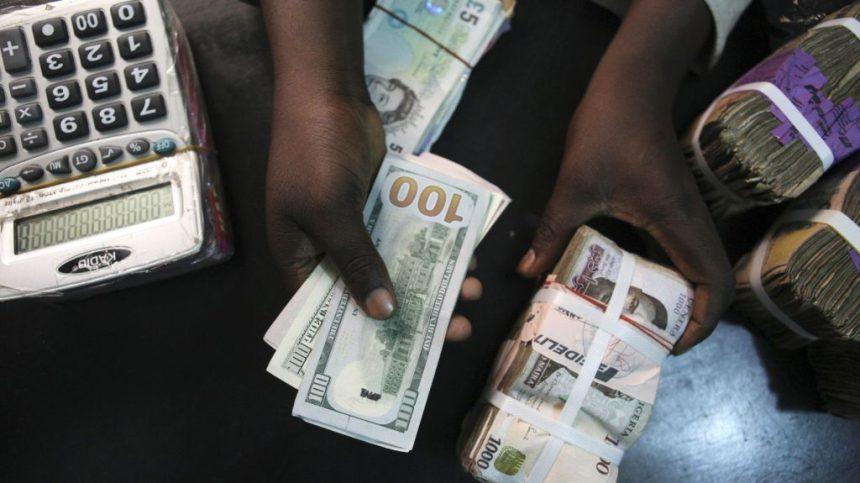In Summary
- Sub-Saharan African nations top the list of weakest dollar exchange rates in Africa as of May 2025.
- A weak dollar exchange rate reflects the state of the country’s internal and external debts, trade issues, and economic stability.
- As of September 2022, the Ghanaian Cedi was the weakest currency in Africa—losing 40% of its worth in that year alone. But today, it ranks as one of the strongest currencies on the continent.
Deep Dive!!
The exchange rates of local currencies in Africa to the US Dollar remain a crucial indicator of economic outlook, fiscal management, and trade stability. However, it is important to note that the weakness or strength of the exchange rate of a country’s currency does not reflect the potential of the country; it only reveals its prevailing economic, political, and trade situation at that point in time.
Within the last decade, many African countries have continued to make conscious efforts to stabilize the exchange rates of their currencies in order to build investor confidence. Yet, there are factors like inflation, lack of enabling business/trade environments, and political instability that continue to make the currencies of many countries depreciate. Below is a list of the top 10 African countries with the weakest dollar exchange rates in 2025, highlighting the contributing factors.
10. Rwandan Franc (RWF)
According to the Central Bank of Rwanda, one of the major issues affecting the Rwandan Franc is its higher depreciation against the Kenyan shilling in 2024, which was driven by an increase in foreign exchange inflows into neighbouring Kenya, leading to monetary policy adjustments and the Kenyan government’s Eurobond buyback. The current exchange rate is approximately 1,415.0 RWF to 1 USD.
9. Nigerian Naira (NGN)
Although it has appreciated within the last four months, the Nigerian Naira has seen better days. Currently sitting at 1,604.7 NGN to 1 USD, Nigeria has slowly slipped from being Africa’s powerhouse into a country battling currency depreciation in the face of foreign exchange shortages, declining oil revenues, and hyperinflation. The value of the NGN dropped when the government introduced new forex reforms and stopped the payment of fuel subsidies in the country.
8. Malawian Kwacha (MWK)
With an exchange rate of approximately 3,300 MWK to 1 USD, Malawi’s Kwacha has continued to experience weakness due to trade imbalances, low foreign direct investment, and huge debt repayments. There is also the issue of high reliance on foreign donor aid and importation, which makes the currency vulnerable to external shocks.
7. Tanzanian Shilling (TZS)
The Tanzanian shilling has appreciated slightly within the past few months and now exchanges at approximately 2,685.0 TZS to 1 USD. The country’s growth in agriculture and tourism is battling against the rising importation bills and low forex reserves, and the central bank appears handicapped in its effort to stabilize the economy.
6. Congolese Franc (CDF)
The Congolese Franc of the Democratic Republic of Congo currently exchanges at approximately 3,100 CDF to 1 USD. The currency is suffering from inflation, internal conflicts, and a fragile macroeconomic environment. Despite the fact that the DRC holds vast mineral wealth, poor governance and increasing security issues continue to hinder economic stabilization.
5. Burundian Franc (BIF)
The current exchange rate of the Burundian Franc is 2,930.0 BIF to 1 USD. Burundi has long struggled with economic isolation, low export earnings, and reliance on external aid. Recent reforms have not yet yielded significant stability for the country, which continues to experience human capital challenges as its local currency slides further against the dollar.
4. Ugandan Shilling (UGX)
In recent times, the Ugandan shilling has been a victim of declining remittances, widening trade deficit, and inflation—which has grappled the economy of the eastern African country. To combat the challenges, the government has rolled out policies and resources to improve infrastructure across the country, and there are indications that these would affect the economy of the country in the near future and stabilize the currency. The current exchange rate is approximately 3,664.2 UGX to 1 USD.
3. Guinean Franc (GNF)
With a current exchange rate of approximately 8,900 GNF to 1 USD, Guinea’s amazing economic potential continues to be overshadowed by massive infrastructural gaps and political instability. Though rich in minerals, inefficiencies in public finance and a lack of investor confidence have depreciated the Franc significantly.
2. Sierra Leonean Leone (SLE)
Following the decision by the government of Sierra Leone to roll out a re-denomination policy in 2022, the Leone has continued to lose its exchange rate value as a result of high inflation and weak export performance. Experts say that increased structural economic issues and limited diversification policies have strained the national currency. The current exchange rate is approximately 20,200 SLE to 1 USD.
1. São Tomé & Príncipe Dobra (Db)
São Tomé & Príncipe tops the list with one of the weakest and most unstable currencies on the continent at the moment. With an exchange rate of 22,281.8 Db to 1 USD, the currency has been affected by rampant inflation, low investor confidence, and poor fiscal management. However, the government has introduced new policies in a bid to stabilize its economy, but time will reveal the effects it will have on the currency exchange rate.



